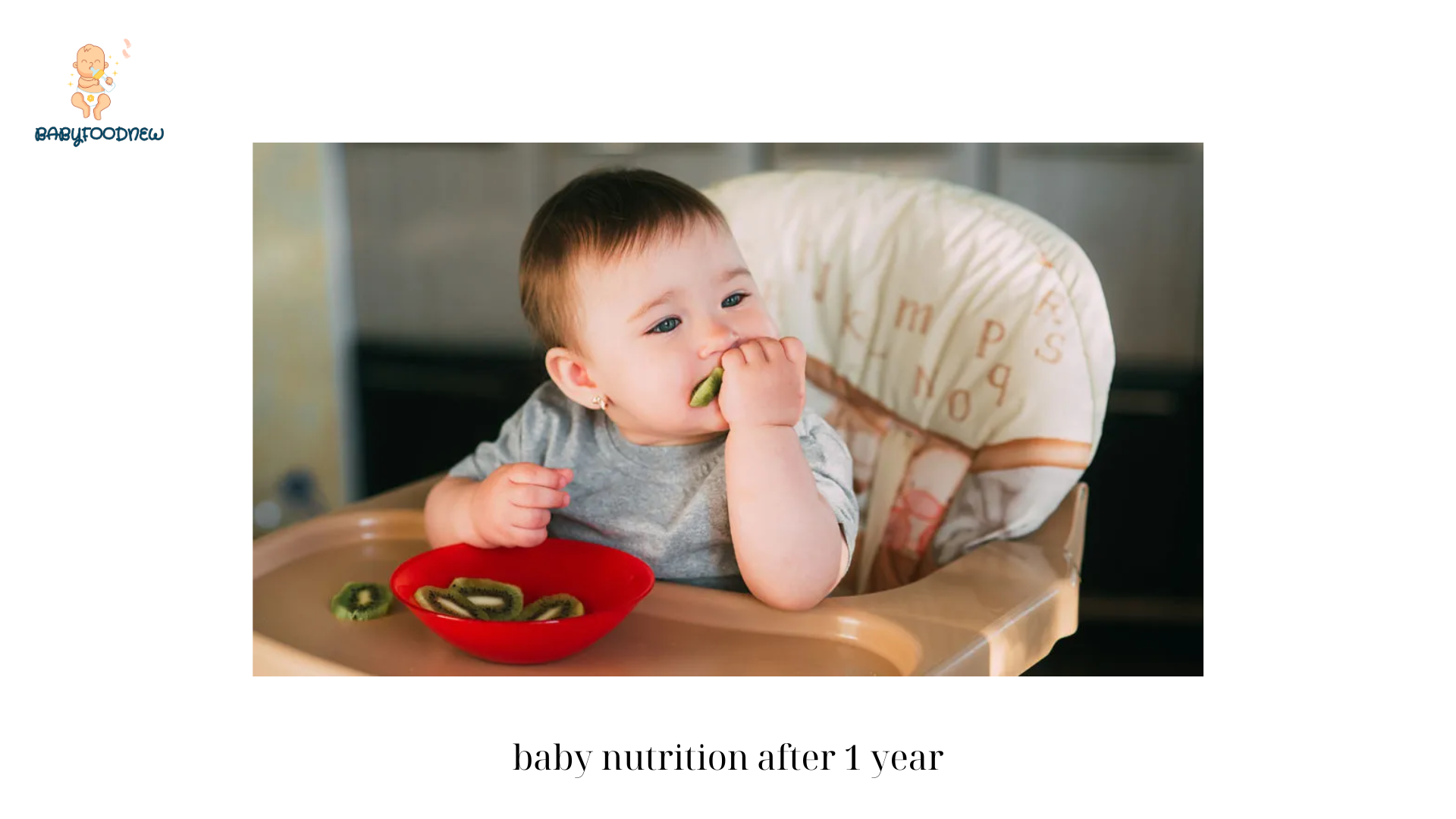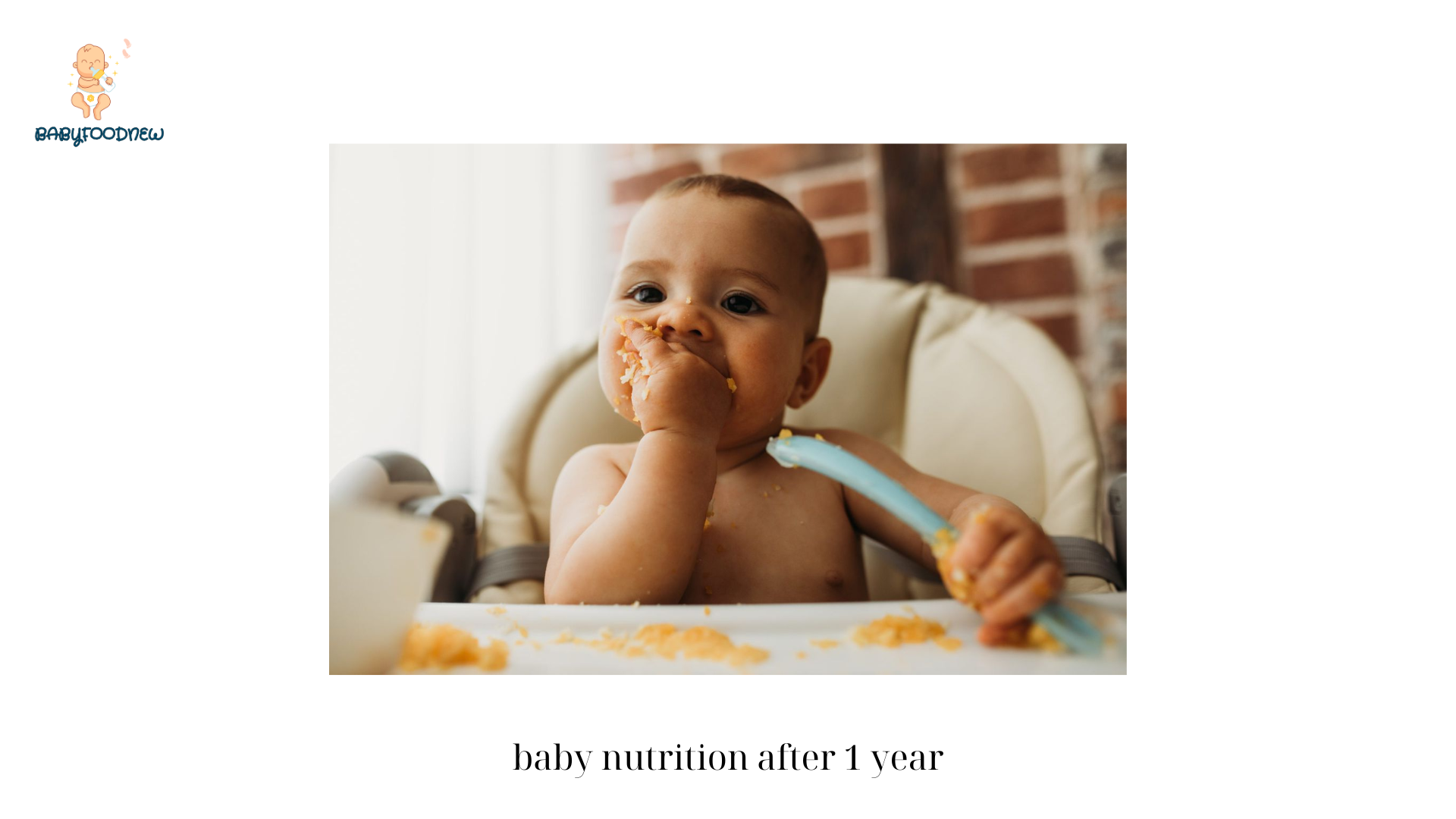As your baby crosses the milestone of their first birthday, their nutritional needs undergo significant changes. The transition from infancy to toddlerhood brings a new set of challenges and opportunities when it comes to their diet. Providing the right nutrition during this critical phase is essential for their healthy growth and development. In this article, Babyfoodnew will explore the essential guidelines for baby nutrition after 1 year to ensure your little one continues to thrive.
Baby Nutrition After 1 Year: Essential Guidelines for Healthy Growth

- The Importance of Balanced Nutrition:
After baby nutrition after 1 year, your baby’s growth rate slows down compared to their first year. However, their nutritional requirements remain high as they continue to develop physically, mentally, and emotionally. It is crucial to provide a well-balanced diet that includes a variety of food groups to meet their evolving needs. - Introducing Solid Foods:
By the time your baby nutrition after 1 year, they should have transitioned from breast milk or formula to a combination of solid foods and milk. Solid foods play a vital role in providing essential nutrients and helping your baby develop their chewing and swallowing skills. Offer a variety of textures and flavors, including soft fruits, cooked vegetables, whole grains, and small portions of protein. - Nutrient-Dense Foods:
As your baby’s stomach capacity increases, you can focus on baby nutrition after 1 year incorporating more nutrient-dense foods into their diet. These foods include lean proteins, such as poultry, fish, and tofu, as well as dairy or dairy alternatives, whole grains, fruits, and vegetables. These foods provide a rich array of vitamins, minerals, and other essential nutrients. - Whole Grains and Fiber:
Introducing whole grains, such as brown rice, quinoa, and whole wheat bread, can provide baby nutrition after 1 year little one with a good source of fiber. Fiber aids in digestion and helps prevent constipation. Offer a variety of grain options to keep their meals interesting and to expose them to different textures and flavors. - Healthy Fats:
Fat is an essential component of your baby’s diet as baby nutrition after 1 year supports brain development and provides energy. Include healthy fat sources like avocados, nut butters, and olive oil in their meals. Avoid foods high in unhealthy fats, such as processed snacks and fried foods. - Milk and Dairy Products:
At this stage, your baby should be consuming whole baby nutrition after 1 year or an appropriate dairy alternative unless advised otherwise by a healthcare professional. Milk and dairy products are excellent sources of calcium, which is crucial for bone development. Offer yogurt, cheese, and other dairy products in moderation to ensure a well-rounded diet.

- Limiting Added Sugars and Salt:
It is important to minimize your baby’s consumption of added sugars and salt into baby nutrition after 1 year. Avoid giving sugary drinks like soda or fruit juices and limit their intake of processed foods and snacks. Instead, encourage them to develop a taste for natural sweetness found in fruits and vegetables. - Encouraging Self-Feeding:
As your baby grows, encourage self-feeding to develop baby nutrition after 1 year fine motor skills and autonomy. Offer age-appropriate finger foods that are soft and easy to chew, such as small pieces of cooked vegetables, fruits, and soft meats. Be mindful of potential choking hazards and always supervise your baby during mealtime. - Hydration:
Proper hydration is important for your baby’s overall health and well-being. Offer water throughout the day, especially during meals and playtime. Avoid sugary beverages and limit the consumption of fruit juices. - Allergenic Foods:
By 1 year of age, you can gradually introduce potentially allergenic foods, such as peanuts, tree nuts, eggs, fish, and shellfish. Start with small portions and watch for any adverse reactions. If you have a family history of food allergies, consult with your pediatrician before introducing these foods. - Mealtime Environment and Role Modeling:
Create a positive and enjoyable mealtime environment that encourages your baby to explore new foods. Sit together as a family and offer a variety of nutritious options. Be a role model by enjoying a diverse range of healthy foods, as children often mimic their parents’ eating habits. - Consistency and Patience:
It’s important of baby nutrition after 1 year to remember that your baby’s taste preferences may change from day to day. Offer a variety of foods and be patient if they reject certain items. Continue to expose them to different flavors and textures, as it may take multiple attempts before they accept new foods.

Conclusion:
Baby nutrition after 1 year is a crucial phase in your little one’s development. By providing a well-balanced diet that includes a variety of nutrient-dense foods, you can support their growth and help them establish healthy eating habits. Remember to introduce new foods gradually, encourage self-feeding, and create a positive mealtime environment. Consult with your pediatrician or a registered dietitian for personalized guidance and recommendations. With the right approach and attention to their nutritional needs, you can set your child on a path to a lifetime of healthy eating habits.


